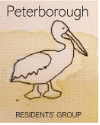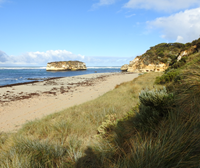July 2024
As I write this, the blue green algae (BGA) in the Curdies is still a problem. This latest outbreak officially started on the Labor Day weekend in March this year. And now in July, it is still an issue. If you thought things seemed to be worse in recent years, then you would be correct. The last five years have seen increasing frequency and intensity of BGA outbreaks and it is so hard to live in Peterborough and watch it and smell it.
On 28 June the latest results were:
Total BGA 45.84mm3/L
Toxic BGA 39.81mm3/L
So, what is BGA? They are actually types of bacteria known as Cyanobacteria. They normally look green and sometimes may turn bluish when scums are dying. There are different types of Cyanobacteria and not all of it is toxic, but in the Curdies, most of it is.
As you would expect, to determine when there is a problem requires scientific analysis and this is a complex process identifying the different types of bacteria. When the laboratory technicians can identify that the rate of toxic BGA is more than 4mm3/L, it is 'officially' toxic. You can see that our current reading is very high.
Our only hope at the moment is that we get sufficient rain to reach the level required to open the inlet in the right weather conditions. Then the BGA can get washed out to sea.
In the meantime we extend our appreciation to the farmers who have developed riparian vegetation on the waterways and who adopt sustainable practices: we are grateful to farmers who care for our environment. Farmers who are yet to plant out riparian vegetation and fence off the waterways, can contact Gene Gardiner at the Corangamite Catchment Authority by email: gene.gardiner@ccma.vic.gov.au or phone: 0419 105 179, for further information.


